
Developed on a huge area, which used to be a dumping ground for the city's garbage for more than 100 years, and located on the Eastern Metropolitan Bypass at the crossing of Park Circus connector, Science City in Calcutta is currently the largest science centre in the Indian subcontinent, providing the facility of learning science with fun. One of its kind in India, the Science city is a unit of the National Council of Science Museums, and an autonomous body under the Ministry of Culture of Government of India.
The huge complex of the Science City, containing the Dynamotion Hall, Earth Exploration Hall, Science Exploration Hall, Space Odyssey, Maritime Centre, along with a sprawling Science Park, is an attractive spot for both the kids and adults alike.
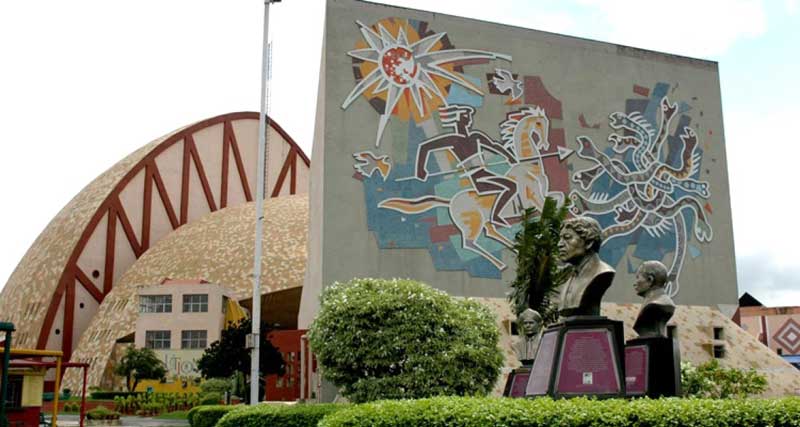
In January 1994, an area of 49.6 acre land was allotted by the Calcutta Municipal Corporation (CMC) for the construction of the proposed complex of Science City, conceived by Saroj Ghose, the first director general of National Council of Science Museums, and the project was completed in 1997, by S Consultants Pvt. Ltd, in partnership with M/S Goto Inc, a Japanese firm. However, the project was inaugurated in two phases.
In the first phase, the Convention Centre Complex, comprising a Main Auditorium with 2232 seating capacity, a Mini Auditorium with 393 seating capacity, a Seminar Hall complex with 11 halls and six acres of uncovered exhibition ground, was inaugurated by Paul Jozef Crutzen, a Nobel laureate in Chemistry, on 21 December 1996. After that, in the second phase, the entire centre was inaugurated on the 1st day of July 1997, by Mr Indra Kumar Gujral, the then Prime Minister of India, in the presence of Mr K V Raghunatha Reddy, Governor of West Bengal and Mr Jyoti Basu, the then Chief Minister of West Bengal.
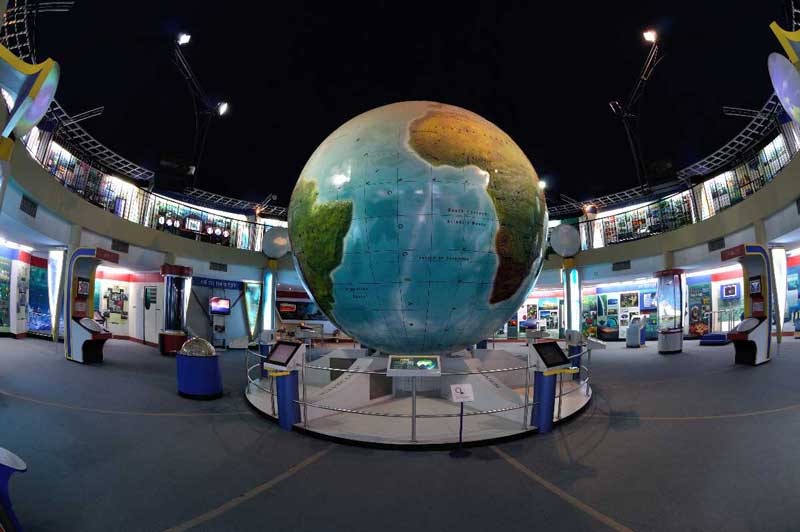
One of the major attractions of the Science City is the Earth Exploration Hall, a permanent exhibition on Earth, inaugurated by Ms Ambika Soni, the then Union Minister for Culture, India on 6th December 2008. Housed in a two storey hemispherical building, with a diameter of 82 feet (25 m), it displays the details of the southern hemisphere on the ground floor and northern hemisphere on the first floor. The hall contains a huge globe at the centre, sliced in 12 longitudinal segments, detailing important features like geology, physical geography, land, people, flora and fauna and other dynamic natural phenomenon of each segment, highlighted with the modern display technologies, including attractive visuals, interactive multimedia, panoramic videos, 3-D effects theatre and more.
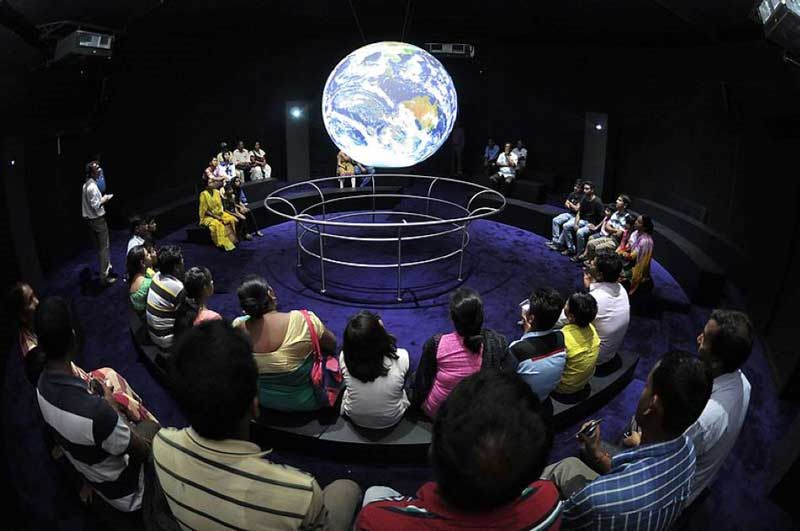
The Dynamotion Hall, a large spiral building in the Science City, offers an exciting journey into the world of science with various hands-on and interactive exhibits on wide various scientific topics with exhibits.
The hall contains a huge piano on the floor where one can create music while simply walking on it, move a floating ball, can make a soap bubble float in the air, peep into the abyss of a deep well, even can make a dish float in the air. The hall contains several sections, which include Powers of Ten, Illusions, Fresh Water Aquarium, Live Butterfly Enclave, and the Science on a sphere Show, along with a 30-minute show, projected on a spherical projection system. Powers of Ten displays 43 exhibits, illustrating different size of the universe, from the smallest to the biggest, by powers of ten, while Illusions, which is a permanent exhibition with interactive exhibits, showcase a world of illusion, illustrating how motion and placement affect visual perception. The Fresh Water Aquarium, equipped with 26 tanks, contains a beautiful collection of freshwater fishes from across the globe, which includes colourful gold fishes, black Angels, piranhas, known for their sharp teeth, black and white banded Asiatica, Silver Dollars and many more. However, as the name suggests, the Live Butterfly Enclave is a colony of butterflies hatched here and are kept in a controlled environment and screening of a film Rang Bahari Prajapati on the life cycle of a butterfly.
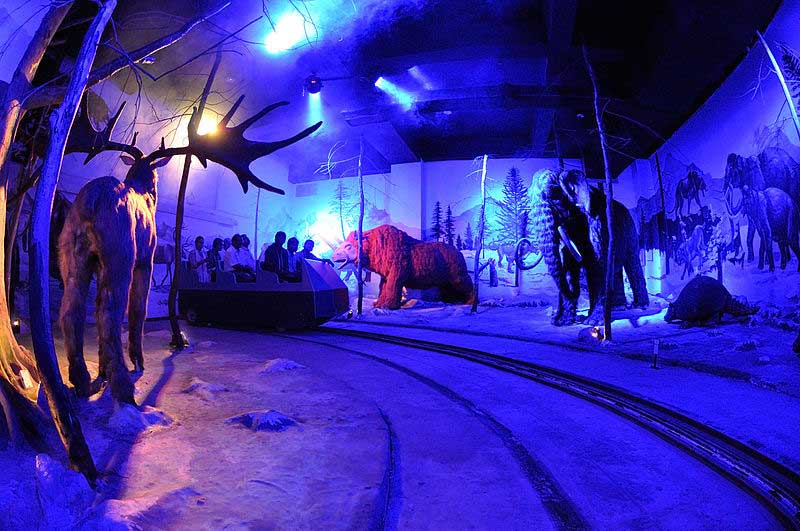
Another interesting part of the Science City, is the Maritime Centre, constructed in the shape of a ship on a build-up area of around 7534 sq feet (700 sq m), developed and built in collaboration with the Kolkata Port Trust, displaying artefacts, scaled models and dioramas of shipping as well as navigation systems, in addition to a unmanned quiz corner. However, the latest addition in the Science City complex is the building of the Science Exploration Hall, opened in 2016, and mainly comprising four sections, namely the Gallery on emerging technologies, Evolution of life - A Dark Ride, Panorama on Human Evolution, depicting the evolution of life over the ages, and Science and Technology Heritage of India.
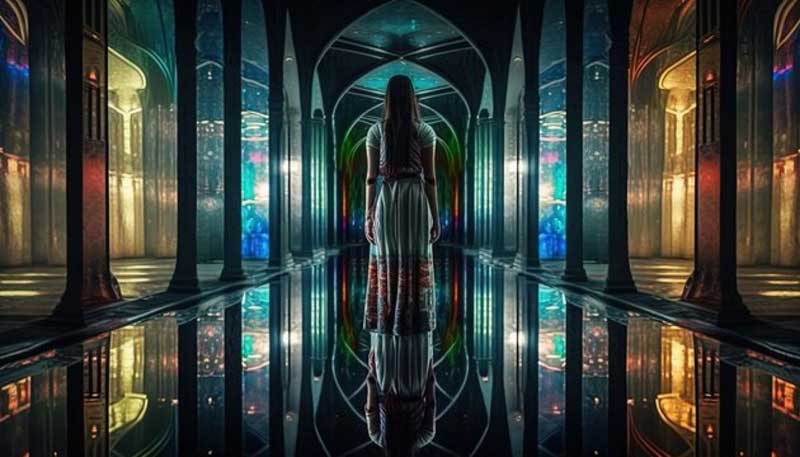
However, perhaps the most interesting part of the complex is the Space Odyssey, a thrilling voyage into the universe, which includes a Space Theatre, 3D theatre, Time Machine, Spinning Platform, Mirror Magic, variety of exhibits on Space Science, an interactive multimedia kiosk on Solar System and many more. The Space Theatre, with a seating arrangement for 360 people, is equipped with a Helios Star Ball Planetarium, supported by 150 special effects projectors and large format film projection system in a 23 metre (around 75 feet) diameter dome, and the Time Machine is a 30-seater motion simulator that provides virtual experiences of space flight, sitting in a capsule maneuvered by a hydraulic motion control system. The Mirror Magic, a confusing hall of mirrors, provided with 35 exhibits which include infinite train, curving tunnel, head on a platter, float in the air, and more, exhibits physical principles behind images, providing real puzzle to the visitors.
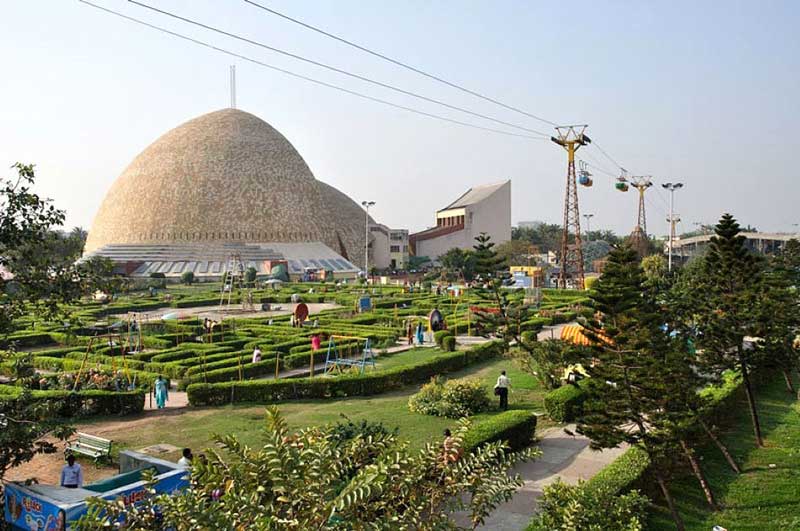
Apart from the indoor attractions, the outdoor Science Park, also welcomes visitors to learn more about the plants, animals, environment, and other objects in our immediate natural surroundings which people usually tend to ignore. The exhibits in the park, engineered to sustain all kinds of weathers, include Cable Cars, Musical Fountain, Caterpillar Ride, Gravity Coaster, Road Train, Monorail cycle, Butterfly Nursery and others on physical science.